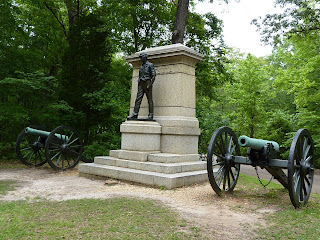After an overnite at the Arlington Hotel, our tour continued on to Dallas and the Texas Book Depository, now the "Sixth Floor Museum," adjacent to Dealey Plaza and the "grassy knoll." This is where the assassination of President John F. Kennedy took place. The area still looks much like it does on the film clips we've seen so many times, only in person, it's all in living color.
There are two marks (like this: X) in the street where the President's car was when the bullets struck. I looked to the street, the grassy knoll, then to the 6th floor window where Lee Harvey Oswald had been. The knoll seems so close to the street and the building directly overlooks the street at the corner where the motorcade turned. We then went up to the museum. We were able to spend time at that infamous window and look down to the street and just imagine what Lee Harvey Oswald was seeing as the motorcade was proceding.
There is much to see there relating to the assassination. I was intrigued with seeing Jack Ruby's hat on display. It's quality, and looks just like new.
Here's a picture of the grassy knoll as it looks today.
This tragic event was a major turning point in American history. It was a defining moment for our generation. Being here was a very somber experience.









